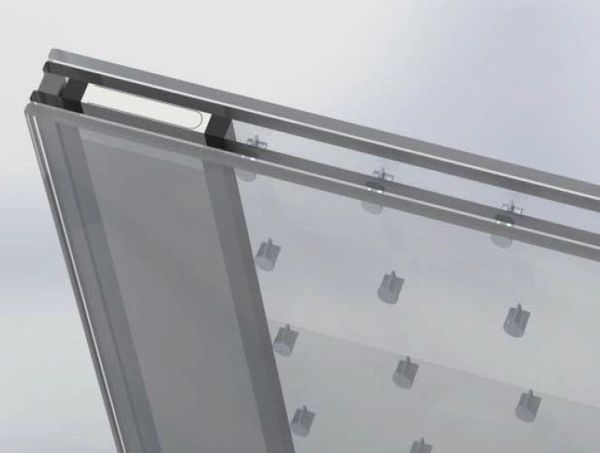
Vacuum Glass
Additional Information
VACUUM GLASS
Vacuum Glass is surrounded by two pieces of glass sealed together, and drawn into a vacuum gap by first drawing out all the air, then sealing the vent. The gap between two pieces of glass is 0.1-0.2mm, Vacuuming the space to make the air pressure lower than 10-1pa, so the gas heat transfer is negligible; the two walls are coated with low radiation film, that radiant heat transfer as small as possible, with one of two pieces is double silver soft Low-E, this will be through the vacuum glass conduction, convection and radiation methods to minimize heat loss, The Low-E coating reflects almost more than 85% of the infrared back. Normally the vacuum glass adopts compound of the tempered glass, IGUs, laminated glass and other deep processed techniques of glass for more safety glass.
Due to excellent heat insulation, sound insulation, moisture condensation prevention and anti-dew forming properties for energy conservation and environmental protection, vacuum glass applications are for windows, doors and curtain walls in construction industry, refrigerate freezer in light industry, photovoltaic solar electrical energy generation in new energy resources industry, ship and train in transportation industry.
Vacuum glass includes Hybrid vacuum insulating glass and transparent vacuum glass with self-supporting spacers. The transparent vacuum glass with self-supporting spacer points-adopts chemical reaction method, which makes the glass surface form even, transparent and highly consistent supporting points.
Get a Quote Here
To get a quote on your next Vacuum Glass project, simply provide us your estimated quantity, sizes and types of vacuum glass you're after and we will get right onto it!
If you‘re unsure of any of the above, you can give us a call and we can help guide you through what you need.
Vacuum Glass Specification
SPECIFICATION:
APPLICATIONS:
FEATURES & BENEFITS:
Vacuum Glass offers the following benefits:
• this extremely thin glazing can be fitted in old style fine frames, maintaining the original appearance of older traditional buildings whilst providing good thermal insulation,
• thermal performance equal to or better than that of most low-e double glazing but in the same thickness as single glass
• offers the opportunity to improve energy efficiency in historic buildings hence reduce heating bills
• four times better thermal insulation than single glazing,
• suitable as a replacement for single glazing in old frames, retaining the appearance of historic buildings and meeting the requirements for conservation areas
• suitable for other applications where use of thinner, low-weight glazing is desirable, such as sliding frame sashes, secondary glazing, or as part of a triple glazed ‘super-window’,
• offers good acoustic performance for lower noise
• proven solution; installed successfully in the UK, Europe and Japan for over a decade
• offers reduced levels of internal condensation compared to single glazing.
Photo Gallery



Video
Downloads
Files coming soon.
